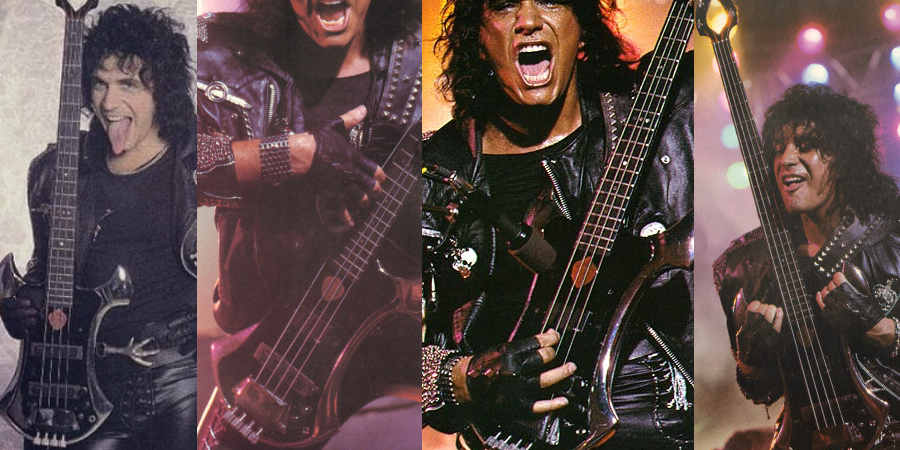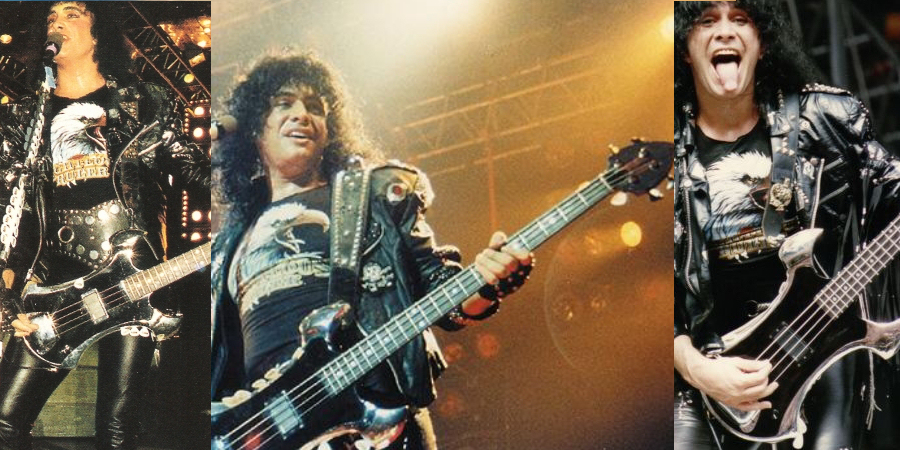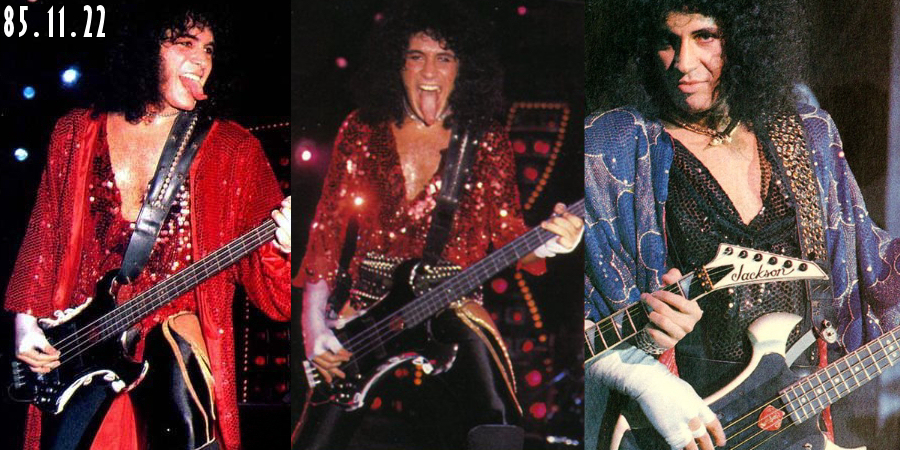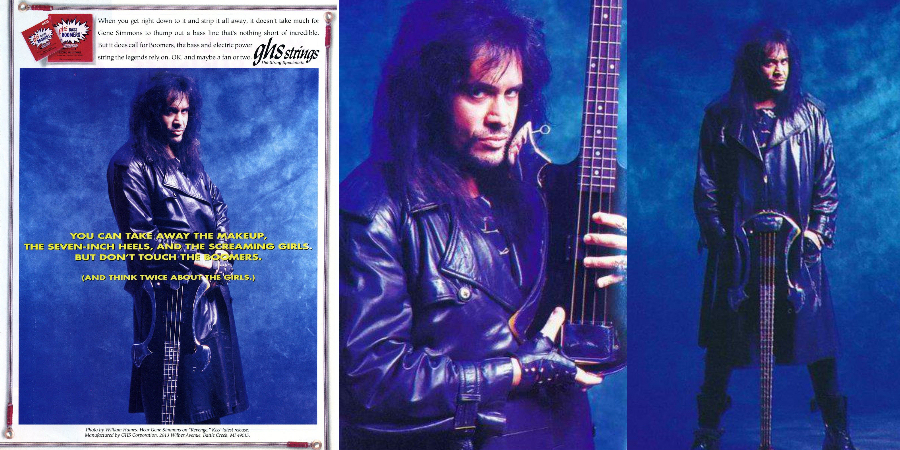The Staccato bass is something quite interesting. They were cast using magnesium alloy and were built in Norfolk, England. The MG model which Gene played was introduced in 1985, which means that Gene was very quick on the draw in getting one, and it retained the cast magnesium neck but had a fiberglass body. The MG was also the first model from Staccato to move away from the concept of interchangeable necks and was built with a set neck. According to the Staccato web site the chrome-plated version with EMG pickups was a custom job for Gene. Note that this particular Staccato has two J-style pickups, what appears to be two control knobs, a front output jack, and the tuning mechanism at the bridge (which was the default for Staccato basses). The first sighting is in Providence 85.11.22 but it also makes a guest appearance in the high-brow concept promo for Uh! All Night.





